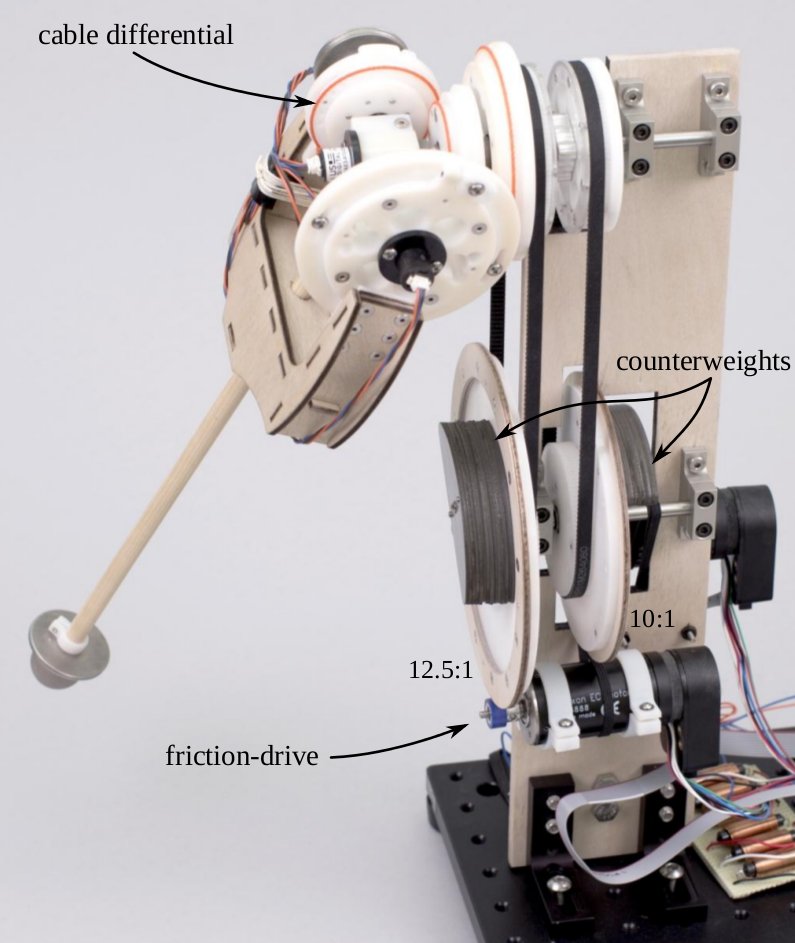Abstract
When designing a robot for human-safety during direct physical interaction, one approach is to size the robot’s actuators to be physically incapable of exerting damaging impulses, even during a controller failure. Merely lifting the arms against their own weight may consume the entire available torque budget, preventing the rapid and expressive movement required for anthropomorphic robots. To mitigate this problem, gravity-counterbalancing of the arms is a common tactic; however, most designs adopt a shoulder singularity configuration which, while favorable for simple counterbalance design, has a range of motion better suited for industrial robot arms. In this paper, we present a shoulder design using a novel differential mechanism to counterbalance the arm while preserving an anthropomorphically favorable singularity configuration and natural range-of-motion. Furthermore, because the motors driving the shoulder are completely grounded, counterbalance masses or springs are easily placed away from the shoulder and low in the torso, improving mass distribution and balance. A robot arm using this design is constructed and evaluated for counterbalance efficacy and backdrivability under closed-loop force control.
Copyright Notice
The documents contained in these directories are included by the contributing authors as a means to ensure timely dissemination of scholarly and technical work on a non-commercial basis. Copyright and all rights therein are maintained by the authors or by other copyright holders, notwithstanding that they have offered their works here electronically. It is understood that all persons copying this information will adhere to the terms and constraints invoked by each author’s copyright. These works may not be reposted without the explicit permission of the copyright holder.
